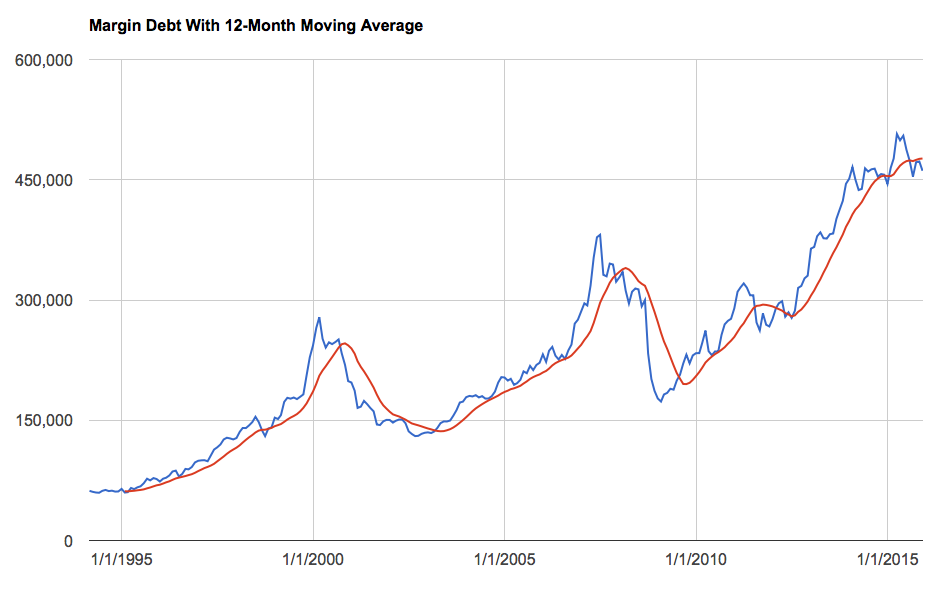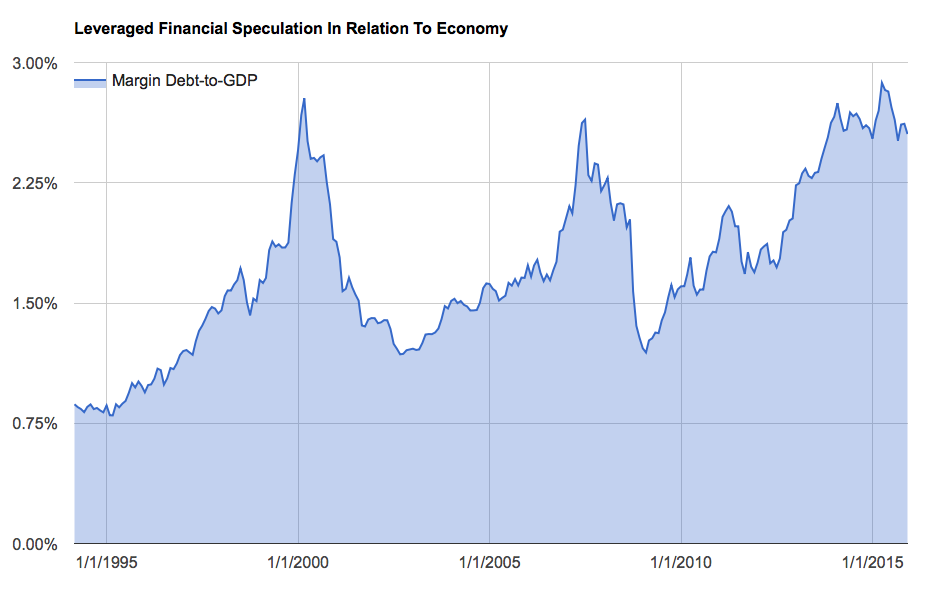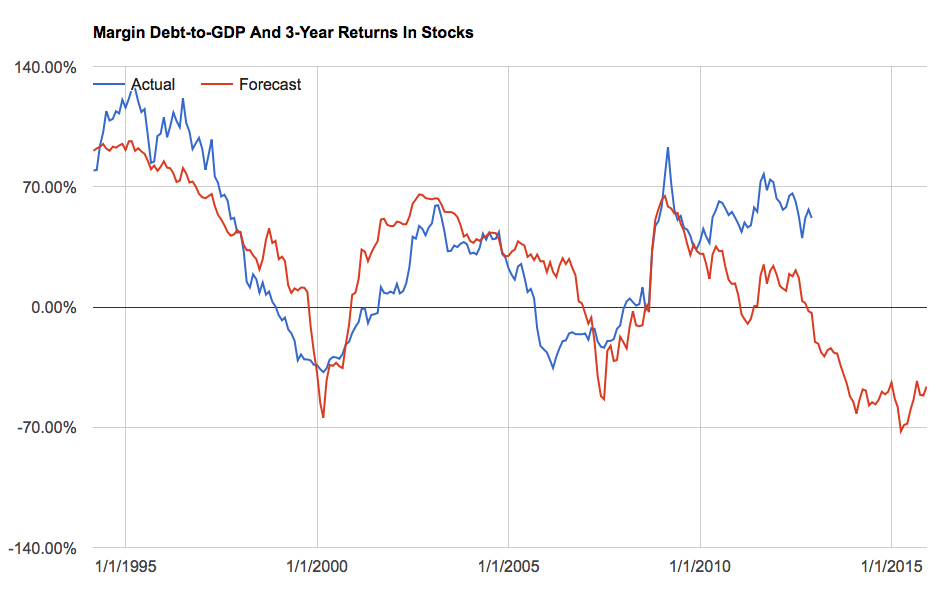The latest NYSE margin debt figures came out this week showing another drop during the month of December. Moreover, the level of margin debt has now spent a few months below its 12-month moving average, which has been a decent bear market signal in the past (first proposed by Norman Fosback).
Even when adjusted for the size of the overall economy, margin debt recently hit record high levels, greater even than what we saw at the peaks just prior to the dotcom bust and the financial crisis.
The reason I like to look at margin debt relative to GDP is that is it fairly negatively correlated with forward 3-year returns in the stock market. When levered financial speculation has been rampant, as indicated by a high level of margin debt-to-gdp, stocks have regularly suffered severe losses over the next several years and vice versa.
Unless you believe, “this time is different,” you should probably expect some rough sledding for the stock market going forward. How rough? Well, after both of the prior occurrences in which margin debt became as substantial as it is today, stocks suffered a 50% drawdown (and 3-year returns of roughly -40% at the lows). If history indeed rhymes, another such decline is not out of the question.


